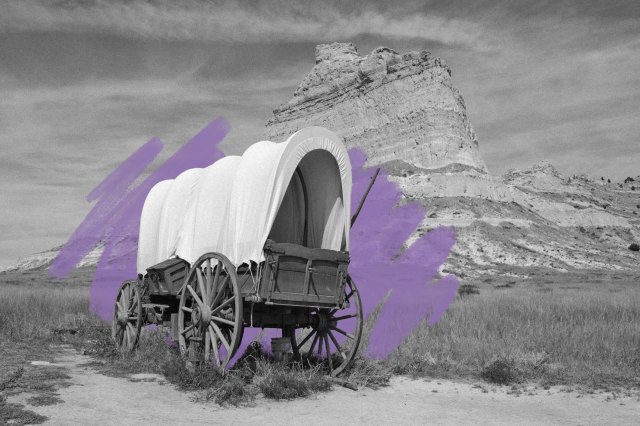 |
Wagon wheel tracks from the Oregon Trail are still visible. |
U.S. History |
 |
| |
| The famed path from Missouri to Oregon pushed through many different types of terrain, so each collection of tracks is unique. Some are wide, shallow indentations worn down in soft earth, while others still show individual wheel tracks. In harder terrain, such as sandstone, deep, angled impressions are still visible, some up to 5 feet deep. In a few places, the tracks tell their own story: Ash Hollow State Park in Nebraska still shows deep erosion from a hilly stretch of trail where travelers had to lock their wheels to keep from going too fast along the steep grade. | |
| Following the tracks can give modern-day road trippers a sense of the route that settlers took westward; helpfully, several highways are in roughly the same place as the original trail, so you never have to miss a historic park or roadside marker. Along I-84 in Oregon, even the rest areas have interpretive signage and, occasionally, yet more wheel tracks to transport you back in time. | |
 | |
 | |||||||||
By the Numbers | |||||||||
| |||||||||
| |||||||||
 | |||||||||
| |||||||||
The wagons weren't for passengers. | |||||||||
| Travelers along the Oregon Trail very rarely rode in their wagons. Walking alongside the wagon both allowed it to carry more weight and, perhaps surprisingly, made the journey more comfortable — walking 2,000 miles may be difficult, but try riding in a wagon full of cargo along rough terrain with absolutely no suspension for that long. Even the drivers guided their oxen from the ground. Despite being on foot, a wagon party could travel 20 whole miles on a good day. | |||||||||
 | |||
Recommended Reading | |||
 | |||
| | |||
 | |||
| | |||
| + Load more | |||
| |||||||||
| 700 N Colorado Blvd, #513, Denver, CO 80206 | |||||||||
|








0 komentar:
Post a Comment